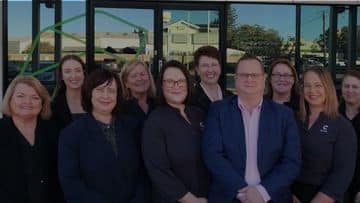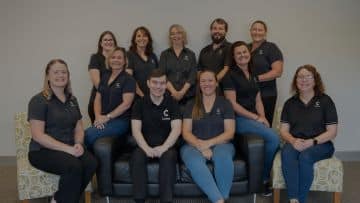While the COVID-19 crisis continues to rage around the world and the nation’s borders remain closed, homegrown innovations from diverse sectors have been moving ahead at warp speed. So how have they managed to succeed in these challenging and complex times?
Seize the day
Some businesses found themselves in the right place, at the right time with their innovations and R&D instantly meeting the moment. But even when your business is in the right place at the right time, you can still miss the boat. That’s why it’s vital for innovation businesses to continually scan the environment for opportunities and go full throttle if they identify one that’s suitable. However, even when you realise a golden opportunity has just landed in your lap, your business will still need to put in the hard yards to make it a success.
Hearing when opportunity knocks
Melbourne start-up, Mr Yum, and its QR-code-driven visual menu service is a case in point. Once the pandemic was declared, Mr Yum lost no time touting the potential for its technology to help restaurants maintain hygiene. In the lead up to the first lockdown, Mr Yum enabled participating restaurants to discard unhygienic printed menus that could spread COVID-19 and use Mr Yum to go digital for food orders instead. This helped reassure restaurant-goers and stopped bookings from falling off a cliff. Once the first lockdown arrived, Mr Yum wasted no time in adding affordable takeaway and food delivery services which helped struggling venues stay afloat. Other start-ups including, medical device innovator, NeedleCalm Pty Ltd, teamed the momentum of a forthcoming global vaccination rollout with some serious hard graft to get its solution to trypanophobia (needle phobia) into production.
Meeting demand
Most businesses were blindsided by the COVID-19 pandemic. But many dusted themselves down and examined how they could pivot their innovation plans to meet fast-changing markets and consumer demand. Sydney-based biotech, Recce Pharmaceuticals, quickly realised that even with the arrival of vaccines, effective treatments against COVID-19 would still be needed. So the business started to explore whether its new class of synthetic antibiotics, designed to fight superbugs, could also work against the coronavirus. Thanks to Recce’s lateral thinking, its compounds are currently undergoing clinical trials in Australia and the US, and the results so far look promising.
Finding new markets at home
Suddenly having to abandon its overseas sales plans in March 2020 and the looming economic shutdown could have spelled disaster for high-end smart home technologies innovator, Quantify Technology. Instead, the business threw its energy into capitalising on opportunities the pandemic had created. The spread of COVID-19 highlighted the infection control benefits of Quantify’s voice-activated and sensor-control qDevice technology. Before the coronavirus emerged, Quantify was making inroads into the aged-care and assisted-living sectors. Now its smart home technology is increasingly seen as a must-have. Pre-pandemic, Quantify focused on the new-build market for homes and offices, but since COVID-19, it has successfully diversified into the retrofit market in the residential and commercial property sectors.
Sovereign service
The COVID-19 pandemic exposed weaknesses in Australia’s supply chain and manufacturing capabilities. In short order, Australian businesses rushed to fill the gap for urgent items such as personal protective equipment and hand sanitiser. The nation’s supply chains, fractured by the COVID-19 crisis, found Australia wanting in sovereign manufacturing capability. The net effect is some of the businesses that pivoted to meet the pandemic challenge will continue manufacturing essential products into the future. New R&D and innovation opportunities will also emerge from the Modern Manufacturing Strategy developed by the Federal Government to bridge Australia’s sovereign capability gap.
Finding the funds
Money makes the world go round. So no matter how good an opportunity or ground-breaking an innovation, it won’t get off the ground without capital behind it. It’s essential to have the right mix of capital and steady cash flow to turn your idea into action. Finding the right balance between having enough funding to progress and your business not becoming too diluted is essential. That’s where combining the Federal Government R&D tax incentive (RDTI) with R&D finance offered by one of our partners, Radium Capital, can help. The RDTI is your own money in the form of your company’s R&D tax refund. R&D advances let you access your own money early, so your business is less reliant on investors and dilutionary equity. Used strategically and regularly throughout the year these advances can help increase the RDTI amount you receive. That’s good news for your R&D and your business. Don’t forget if your innovation and business sector align with the government’s manufacturing priorities under the Modern Manufacturing Strategy, sizeable grants are available from the Manufacturing Modernisation Fund too.
Taking the plunge
With pandemic restrictions set to remain in the short and medium-term, maybe your business is weighing up whether to pursue an opportunity? If capital and funding is a potential stumbling block, remember Radium Capital’s expert advisers are there to help, so don’t hesitate to get in touch.
Need some help getting started with your R&D tax incentive claim?
Get in touch with our R&D experts today.





















